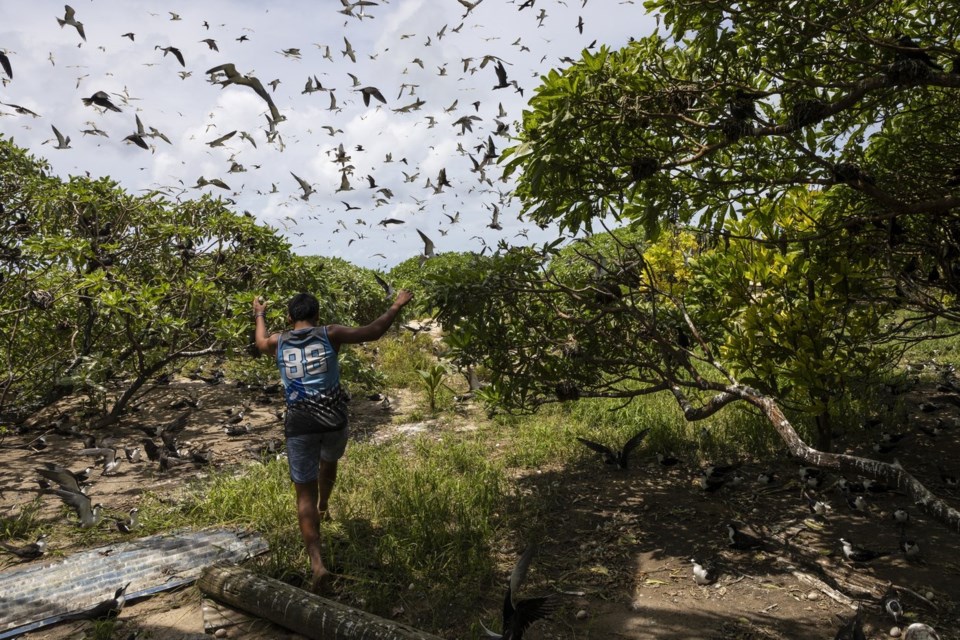CALI, Colombia (AP) ŌĆö Global efforts to protect the world's plants and animals have made slight progress and some species remain in serious decline, according to two reports released Monday at a major United Nations biodiversity summit in Colombia.
A report from the United Nations Environment Programme (UNEP) evaluated global progress since its biodiversity report in 2020. Two years ago, 196 countries on 30% of the planet by 2030.
The biodiversity summit underway in Cali, Colombia is a follow-up to the 2022 accord in Montreal, which to halt and reverse nature loss. One calls for putting 30% of the planet and 30% of degraded ecosystems under protection by 2030.
The UNEP report found countries have made some headway on pledges, but that expansion of the global network must accelerate over the next six years to meet the goal. The report says 17.6% of land and inland waters and 8.4% of the ocean and coastal areas globally are within documented protected and conserved areas.
ŌĆ£The increase in coverage since 2020, equivalent to more than twice the size of Colombia, is to be celebrated,ŌĆØ UNEP said in a news release. ŌĆ£But it is a rise of less than 0.5 percentage points in both realms.ŌĆØ
An area of land roughly the size of Brazil and Australia combined and sea area larger than the Indian Ocean need to be protected and conserved by 2030 to meet the global target, said UNEP.
ŌĆ£It is ... equally important that these areas are effective and that they do not negatively impact the people who live in and around them, who are often their most valuable custodians," said UNEP Executive Director Inger Andersen. ŌĆ£TodayŌĆÖs landmark report shows some progress has been made in the past four years, but we are not moving nearly far or fast enough."
The UNEP's report uses the latest official data reported by governments and other initiative stakeholders.
ŌĆ£The ŌĆś30 by 30ŌĆÖ is an ambitious target, but one that is still within reach if the international community works together across borders, demographics and sectors,ŌĆØ said Grethel Aguilar, director general at The International Union for the Conservation of Nature (IUCN).
The IUCN reported Monday that 38% of the worldŌĆÖs trees are at risk of extinction.
The Swiss-headquartered organization says its Red List of Threatened Species now includes 166,061 species ŌĆö 46,337 of them threatened with extinction.
Trees now account for over one quarter of species on its endangered list, and the number of threatened trees is more than double the number of threatened birds, mammals, reptiles and amphibians combined, IUCN said.
Tree species are at risk of extinction in 192 countries around the world, the organization said. The highest proportion of threatened trees is found on islands since they are particularly at high risk due to deforestation for urban development and agriculture, as well as invasive species, pests and diseases.
ŌĆ£This comprehensive assessment presents the first global picture of the conservation status of trees, which enables us to make better informed conservation decisions and take action to protect trees where it is urgently needed,ŌĆØ said Malin Rivers, Global Tree Assessment lead at Botanic Gardens Conservation International.
Global loss of trees is a major threat to thousands of other plants, fungi and animals, according to IUCN.
The report also noted the conservation status of the Western European hedgehog has deteriorated and it's now listed as ŌĆ£near threatened,ŌĆØ with numbers reduced by an estimated 16 to 33% over the past 10 years.
The worst declines have been documented at up to 50% in Bavaria, Germany, and Flanders, Belgium. The decline is driven by ŌĆ£increasing human pressures, particularly the degradation of rural habitats by agricultural intensification, roads and urban development,ŌĆØ the report said.
ŌĆö-
Follow Steven Grattan on X:
ŌĆö-
The Associated PressŌĆÖ climate and environmental coverage receives financial support from multiple private foundations. AP is solely responsible for all content. Find APŌĆÖs for working with philanthropies, a list of supporters and funded coverage areas at .
Steven Grattan, The Associated Press



